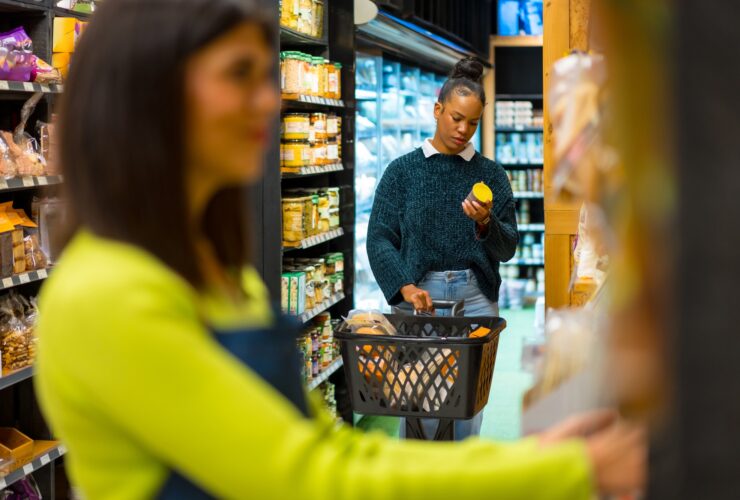The reason that hand washing is so important for disease prevention is because your hands collect high levels of potentially infectious microbes as you go about your day touching surfaces that others have touched and contaminated. When you go to a clinic or hospital, you are exposing yourself to higher numbers of dangerous viral and bacterial particles by touching these surfaces and being near others. These numbers are higher in health care settings because sick patients have shed infectious particles by way of respiratory droplets in the air and have touched common items, contaminating them.
Besides social distancing, washing hands is one of the best ways we know of to prevent the spread of viruses and illnesses-causing microbes. Viruses are encased in a “lipid envelope,” which is a fancy way to say a fat layer. Soap is able to break down fats well and is able to deactivate the pathogenic virus. Elizabeth Scott, PhD, who directs the Center for Hygiene and Health in Home and Community in Boston, says by washing your hands you are “physically removing things from your hands…for certain agents, the soap will actually be busting open that agent, breaking it apart.”
How to be a hero
The CDC has a new national handwashing campaign, “Life is better with clean hands.” It may not be the catchiest phrase, but their simple 5-step method of wet, lather, scrub, rinse, dry is clear and backed by science. When using soap and water to clean, studies show that the temperature doesn’t matter. It’s a myth that warm water is needed to better kill germs. In fact, warm water can become too hot and irritate skin easier.
Wet your hands with running water, rather than a bowl of standing water. You then use soap on hands to start lathering and scrubbing. Soap is used in addition to water as it has surfactants that trap and lift germs from skin. Your soap does NOT have to be “antibacterial” to remove microbes from your hands. The FDA finally agreed in 2016 and stopped marketing products with triclosan to the public.
The scrubbing of soap on your hands needs to last about 15-30 seconds according to most studies. Most global public health resources recommend 20 seconds, which is the main step most of us skip. On average we spend 6 seconds- not nearly long enough. At this point, you should rinse both hands well with clean, running water, ensuring to not touch the bowl of the sink. Dry your hands using a clean towel or air dry; don’t use a repeat-use towel in a public space.
How to use soap and water to wash hands:
- Wet your hands.
- Apply soap to hands. Lather hands — be sure to cover backs of hands, between fingers, under jewelry, and under nails.
- Scrub hands for at least 20 seconds.
- Rinse hands well under running water.
- Dry hands with a clean towel or air.
There are times soap and water aren’t available which is a great time to use hand sanitizer. Soap and water are best for many reasons such as efficacy, reducing chemicals on hands, and microbial resistance. For example, hand sanitizers may not remove grease, pesticides, heavy metals, or be effective against many illness-causing microbes.
The action of alcohol-based sanitizers is dependent upon concentration, amount, and leaving it on to dry. You want a formula with at least 60% alcohol on the label. Most labels will also describe an amount of product you need to use to be effective. Hand sanitizer works well at reducing the number of germs but usually doesn’t kill all types. So if you have the choice between hand washing or “gelling,” opt for the soap and water. But in a pinch, a hand sanitizer will still help prevent sickness and the spread of germs to others.
How to use hand sanitizer:
- Apply correct amount of product (see bottle) to palm of one hand.
- Rub hands together, ensuring to get product over all surfaces of hands and fingers.
- Continue to move product around hands until dry, usually about 20 seconds.
The CDC recommends washing before and after cooking, before eating, before helping those who are sick, after blowing nose/coughing/sneezing, after interacting with animals, after touching pet food, and after touching garbage. Protect yourself and those around you by following these easy steps.
Sources:
- Burton M, Cobb E, Donachie P, Judah G, Curtis V, Schmidt WP. The effect of handwashing with water or soap on bacterial contamination of hands. Int J Environ Res Public Health. 2011;8(1):97-104.
- CDC. Antimicrobial spectrum and characteristics of hand-hygiene antiseptic agents. MMWR Morb Mortal Wkly Rep. 2002;51(RR16):45.
- CDC. Guideline for Hand Hygiene in Health-Care Settings. MMWR Morb Mortal Wkly Rep. 2002;51(RR16):1-44.
- Goodman, B. (2020, March 6). The Power of Hand-Washing to Prevent. Retrieved from https://www.medscape.com/viewarticle/926373?src=WNL_trdalrt_200309_MSCPEDIT&uac=248812DK&impID=2304977&faf=1
- Jensen D, Schaffner D, Danyluk M, Harris L. Efficacy of handwashing duration and drying methods. Int Assn Food Prot. 2012.
- Laestadius JG, Dimberg L. Hot water for handwashing–where is the proof? J Occup Environ Med. 2005;47(4):434-5.





